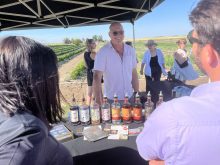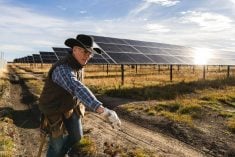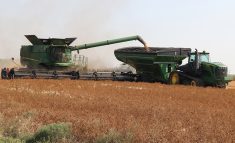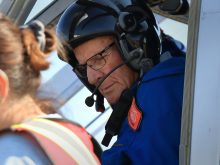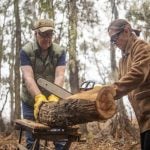KAMSACK, Sask. – The cows on Dwayne Anderson’s ranch are naturally outfitted with a straight cut header, manure spreader and four-wheel drive.
“They come all standard equipment with every cow,” said the Kamsack area cattle producer.
Using such low-tech natural advantages and keeping handling to a minimum are among Dwayne’s strategies in maintaining a large herd, reducing operational costs and providing a country lifestyle for his wife Judy and their three children.
This cool fall day, he and Judy apply insect treatment and antibiotics and brand, within hours of the arrival of 54 spring-born calves.
Read Also
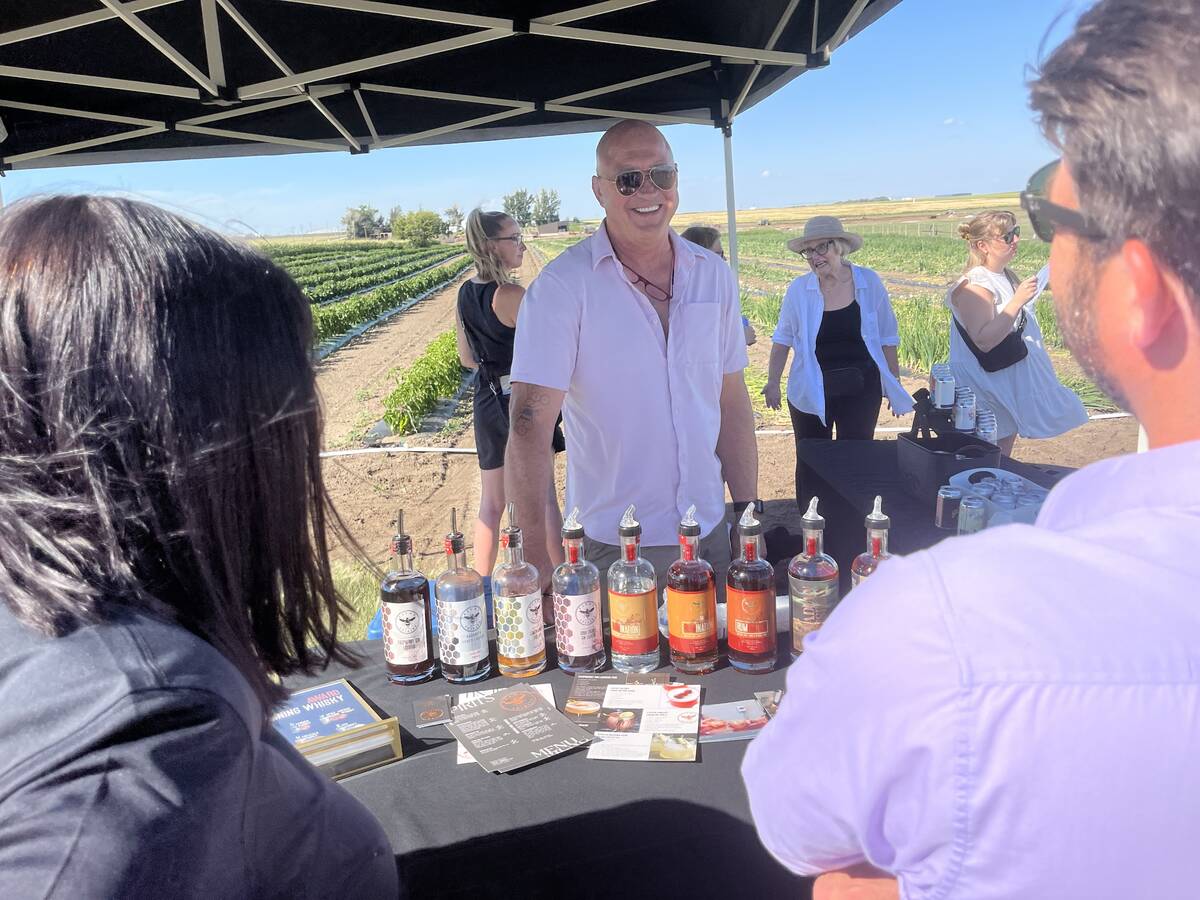
From farmer to award-winning distiller
Pivot Spirits showcases transition from farmer to distiller with provincial award-winning results in Alberta for Lars Hirch
“We try to do everything all at once,” he said.
Keeping close tabs on the cost of producing animals is paramount, he said, citing the $50 to $100 return needed from every cow to cover the Anderson household expenses.
“If we can’t, we have to run more animals or cut our costs,” he said.
Dwayne tries to reduce winter feed expenses by maintaining the pastures for as long as possible, growing corn for grazing and striving for trouble-free cattle able to take care of most of their own needs.
It was Dwayne’s focus on the economics of raising cattle and a desire to increase the farm size and make a full-time living from the ranch that precipitated a move to Saskatchewan from the family’s ranch at Claresholm, Alta., in the mid-1990s.
“If we hadn’t moved here, we would have been working off the farm like everybody else,” he said.
The Andersons chose Kamsack because of the recreational facilities at Duck Mountain Provincial Park, abundant wildlife, proximity to town and schools and availability of land, water and sheltered bush for the cattle.
“There is a lack of economic sense in Alberta,” said Dwayne.
For every acre sold in Alberta, the Andersons were able to pick up seven acres in Saskatchewan. They can grow here on dry acres 80 percent of what they once grew on irrigated land, without the investment and equipment.
Dwayne said the Kamsack crop district grows a lot of grain but also has the second highest number of cows in the province.
He expects that will increase as people discover the area’s advantages for cattle. The former long distance livestock hauler believes his community produces some of the biggest cows in North America.
He seeds 200 acres of forage for grazing each year, growing feed for his large herd spread over the 11 quarters they own and additional pastures they rent.
Dwayne feeds them 50 round bales a day, selling the cattle at about 16 months of age.
“We don’t finish any of our own. We concentrate on growing quality feeders that bring a top dollar from August to October,” he said.
The family managed the recent BSE outbreak by increasing herd size and buying lower priced animals. They had to manage about 40 percent more cows to produce the same income, said Dwayne, who hauls about 12 loads of his yearlings to Alberta each year.
He relies on a dealer to find him 500-pound animals, with good coats and black and white faces.
He feels the thick hides of the British crossbreds, mainly Angus-Herefords, are best suited to the Kamsack climate.
“Here we keep it simple, with the least amount of labour, manpower and equipment,” said Dwayne.
Practising good farm stewardship is another farm priority, with the Andersons leaving grass around the creeks to minimize erosion and runoff.
“The most important thing is to look after the water. If you don’t, the public will force you to.”
He stressed the importance of maintaining good fencing and avoiding contamination of riparian areas.
“Here people fence their cattle into the creek. We fence them off from the creek,” he said, pointing to a dugout that is filled by the creek but does not flow back to it.
Judy and Dwayne enjoy Saskatchewan’s four distinct seasons and try to work with them, calving in May and June because it’s easier on the animals. Neither misses the chinook winds in Alberta’s foothills.
“We used to wear ski goggles to keep the dirt out,” said Dwayne.
Judy spent part of her childhood on an Alberta ranch and supports Dwayne’s dream to run a cattle operation.
“Every day, it’s something different. You never really know when you go out the door what wrecks you’re going to run into.”
Dwayne, the son of psychiatric nurses, grew up in Alberta and British Columbia and settled into ranching at Claresholm. He learned the trade by trial and error, with the help of good neighbours and through his directorship with the Alberta Cattle Feeders Association.
“We had no one telling us what to do,” he said.
Holidays are few and far between and good farm labour is in short supply, so the family relies on one another to help out and do chores.
Nearby Duck Mountain affords the family quick daytime getaways from the ranch, where they can spend up to six hours each day feeding and checking animals.
Judy uses an all-terrain vehicle to check the herd, but also manages most of the children’s school and extracurricular activities that have ranged from 4-H to dance to church groups.
Kelsey, 15, and Kaylee, 11, enjoy working with animals but sometimes miss hanging out with friends living in town.
“”It’s more peaceful here but in town, you’re closer to everyone,” said Kelsey.
The Andersons have no regrets about leaving Alberta behind.
“This is home,” said Dwayne. “Back there is not home anymore.”
Like a dozen or more Alberta families who have moved into east-central Saskatchewan in recent years, they see it as a land of opportunity.
“This is Alberta 25 years ago,” Dwayne said, citing the boom times and increasing numbers of acreage homes built near his former ranch. “Alberta’s high pace wears you out.”
Judy said Saskatchewan often gets a bad rap for being barren and flat.
“You have to get off the highway to see the beauty,” she said.
As first generation farmers, the Andersons feel less pressure to maintain the family business, but they look forward to their son Brad returning to the farm in the years ahead.
Brad is studying agriculture at Olds College in Olds, Alta., and believes he can bring new ideas from his education that will complement his on-farm training.
He is hoping to farm full time, but also looks to extra income from trucking and sales of liquid mineral supplements or livestock handling equipment.
“There’s the satisfaction of feeling like you accomplished something,” said Brad of the farm lifestyle. “You can see what you’ve done at the end of the day.”


